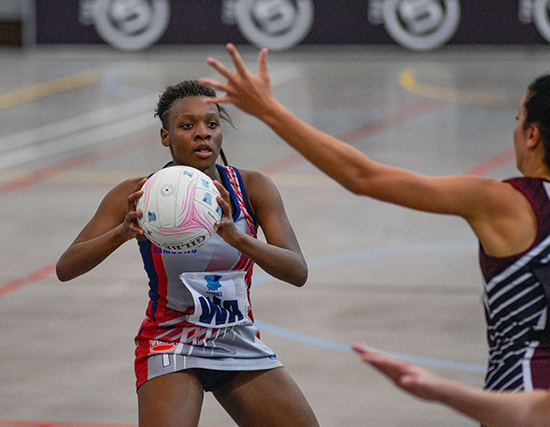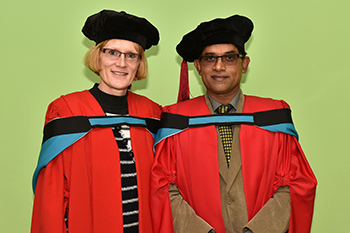Latest News Archive
Please select Category, Year, and then Month to display items
27 September 2018
Photo Varsity Sports
 Newly capped Protea Khanyisa Chawane will return for the Kovsies on Monday when they face the Maties in the semi-final of Varsity Netball in the Callie Human centre.
Newly capped Protea Khanyisa Chawane will return for the Kovsies on Monday when they face the Maties in the semi-final of Varsity Netball in the Callie Human centre.
A first ever Varsity Netball final in the Callie Human centre lie in what should the Kovsies cross the line this Monday in the semi-final against the Maties in Bloemfontein at 19:00.
Having ended first on the log, the Kovsies will enjoy home court advantage should they progress to the final on 8 October.
The Kovsies won their group fixture against the Maties last month in Stellenbosch by 59-56. It will be the first time the two teams clash in a knock-out match in the competition and also a first visit to the Callie Human centre for the Maties since 2013.
The Kovsies won six out of their seven group matches with their only loss against the Madibaz by a single goal.
They will be strengthened by the return of Khanyisa Chawane (centre) who missed a couple of matches whilst being in Australasia where she made her Protea debut. Meagan Roux, who can either play wing attack or goal attack, is also back. She travelled with the Proteas as a replacement.
They will however be without Tanya Mostert who will be on honeymoon. Her wedding is on Saturday. Remarkable it will only be the second time since her debut in the Kovsies’ very first match in the inaugural competition in 2013 that Mostert will miss a Varsity Netball match.
“The players really yearn to lift that trophy. It’s been some time since we last played in the final (in 2014). My message to them will be to give it their all on Monday,” Mostert said.
According to her the team is currently one that gels very nicely.
“Everyone fully understands their role in the team. We realized where our strengths lie and play according to it. Adding to that we play for one another.”
Using sugar to make the world a sweeter place
2017-10-13

Dr Deepack Santchurn, former PhD student in the
Department of Plant Sciences at the UFS,
and plant breeder in the Mauritius Sugar Industry
Research Institute, with Prof Maryke Labuschagne, left,
Dr Santchurn’s study leader.
Photo: Charl Devenish
Besides it mainly being used for sugar production, sugarcane has emerged as an important alternative for providing clean renewable energy. Dr Deepack Santchurn, who works in the sugarcane breeding department of the Mauritius Sugar Industry Research Institute (MSIRI), believes if he could contribute towards a more environment-friendly and renewable energy through the use of sugarcane biomass, he would consider himself having made a great leap towards a better world.
Sugarcane is mostly known and exploited for the sugar in its cane stem. According to Dr Santchurn it is not the only thing the crop does well. “Together with certain grasses, it is the finest living collector of sunlight energy and a producer of biomass in unit time. Sugarcane is now recognised worldwide as a potential renewable and environment-friendly bioenergy crop.”
Significantly more bioenergy can be produced from sugarcane if the production system is not focused on the production and recovery of sucrose alone but on the maximum use to the total above-ground biomass. Diversification within the sugarcane industry is of paramount importance.
He has been able to identify a few high biomass varieties that can be exploited industrially. One of the varieties is a commercial type with relatively high sugar and low fibre in the cane stem. Dr Santchurn explains: “Its sucrose content is about 0.5% less than the most cultivated commercial variety in Mauritius. Nevertheless, its sugar yield and above-ground biomass yield surpass those of the commercial varieties by more than 24%. The genetic gains compared to commercial varieties were around +50% for total biomass yield and +100% for fibre yield. Its cultivation is strictly related to bio-energy production and the extracted juice can be used as a feed-stock for ethanol and other high-value products.”
Dr Santchurn received his PhD at the UFS’s Department of Plant Sciences during the Winter Graduation Ceremonies in June this year. His study leader was Prof Maryke Labuschagne from the Department of Plant Sciences.